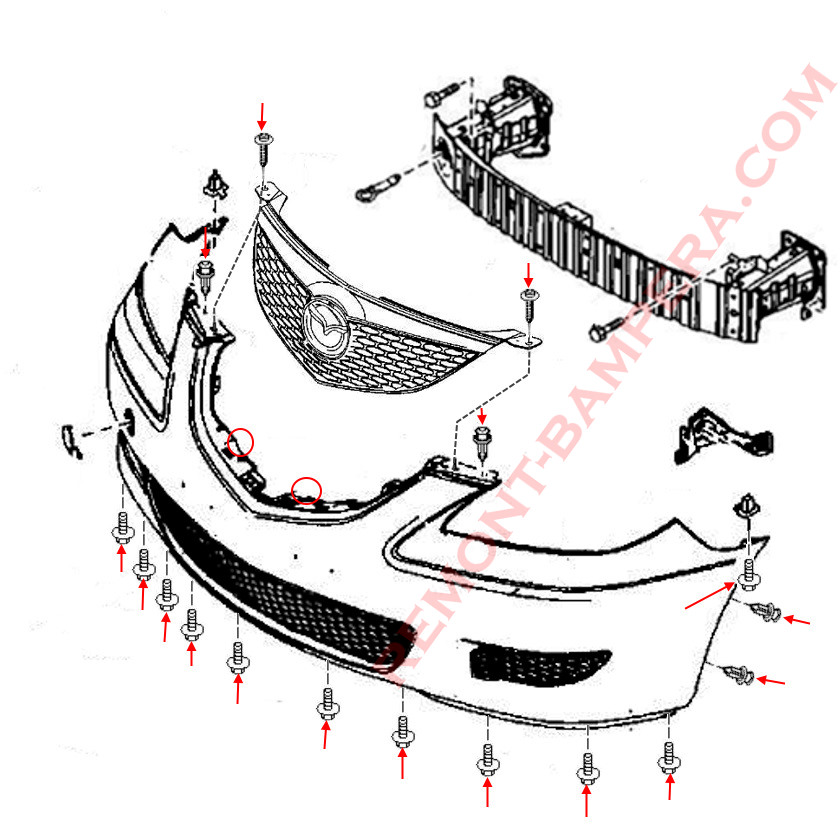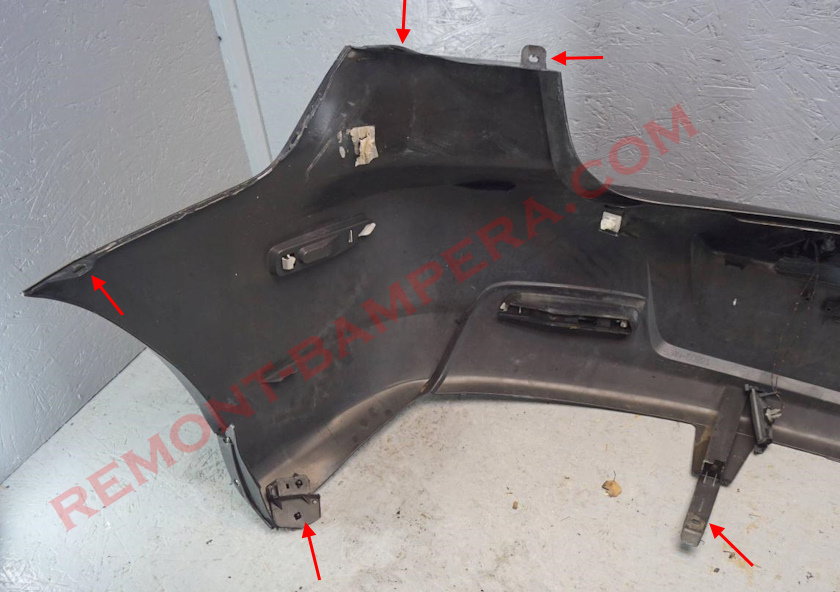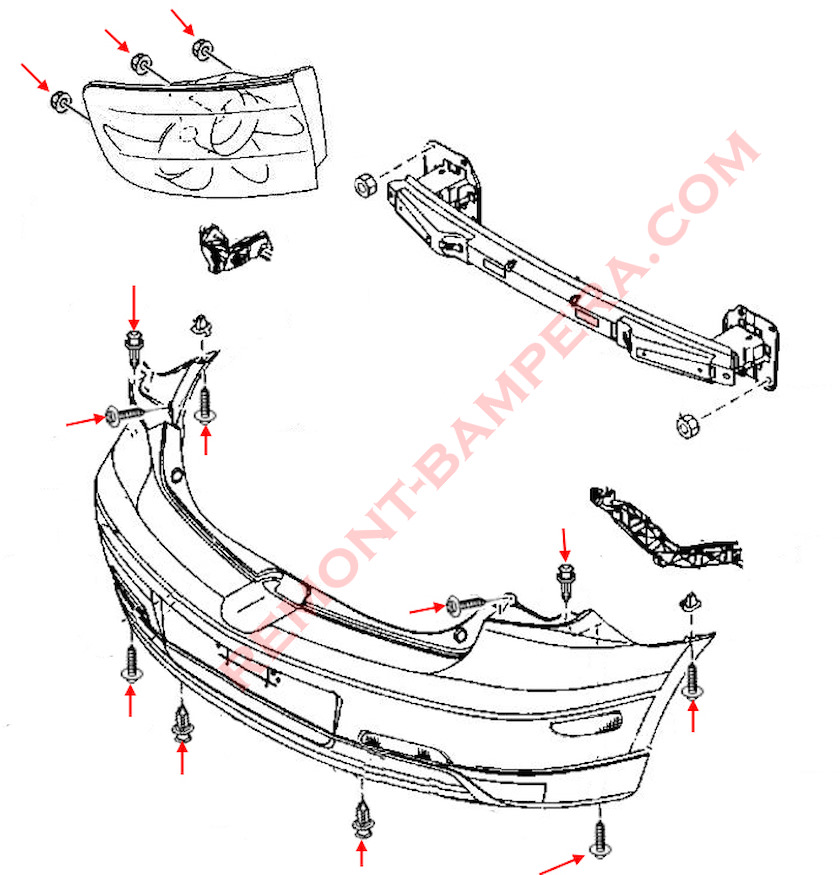Production Years and Model Code
The first generation Mazda 3, known in Japan as the Mazda Axela, debuted in 2003, replacing the popular but outdated Mazda 323. Production continued until 2009 when the second generation (BL) was introduced.
The model's platform was developed jointly with Ford (as part of the Ford-Mazda alliance) and received the factory index BK. This same platform was used for the Ford Focus II and Volvo S40/V50, giving the Mazda 3 excellent handling and reliability.
2006 Facelift
In 2006, the Mazda 3 underwent a minor but noticeable facelift:
Exterior: The radiator grille was changed (becoming wider and more aggressive), new bumpers, LED taillights, and slightly redesigned headlights.
Interior: Improved material quality, a new dashboard design, and a multimedia system with navigation in top trim levels.
Technical Changes: The suspension was refined for a smoother ride, and the list of available options was expanded (e.g., DSC stability control).
Body Styles and Modifications
The first-gen Mazda 3 was available in three main body styles:
- Sedan – a classic four-door version with a spacious trunk (approx. 400L).
- 5-door Hatchback – a sportier and more practical option with a shorter rear overhang and convenient loading.
- 3-door Hatchback – a rare version for the European market with a dynamic design.
Engines:
Petrol:
- 1.4L (84 HP) – the base engine, but somewhat underpowered for the heavy Mazda 3.
- 1.6L (105 HP) – the most popular, balancing fuel economy and performance.
- 2.0L (150 HP) – a powerful naturally aspirated engine with good responsiveness.
- 2.3L Turbo (260 HP) – exclusive to the Mazdaspeed3 (MPS in Europe) with AWD and aggressive tuning.
Diesel (for Europe):
- 1.6L MZ-CD (109 HP) – fuel-efficient but not the most reliable.
- 2.0L MZR-CD (143 HP) – more torque-rich but problematic due to the diesel particulate filter in long-term use.
Bumper Plastic Marking: >PP-(S27+T17)<
How to Remove the Front Bumper
- Open the hood.
- Unscrew two screws (inserted top to bottom) securing the radiator grille and remove two clips (inserted top to bottom) holding the top of the front bumper.
- Pull upward and remove the radiator grille.
- From underneath, unscrew eleven bolts (10 mm, inserted bottom to top).
- Turn the wheels left or right.
- In the wheel arches, remove two clips on each side securing the front part of the fender liners.
- Bend the fender liners aside and unscrew one bolt on each side (inserted bottom to top) securing the corners to the fenders.
- Release the latches in the fenders (grab the corner and pull sharply toward yourself).
- Release the latches under the radiator grille (lift two retainers upward by hand, as marked on the diagram).
- With an assistant, remove the front bumper by pulling it forward (watch for wires and hoses).
- Disconnect fog light connectors (if equipped).
- Disconnect headlight washer hoses (if installed).


How to Remove the Rear Bumper
- Open the trunk lid.
- Behind the trunk side trims, unscrew three nuts on each side and remove the taillights.
- Unscrew two bolts and remove two clips securing the top of the rear bumper.
- From underneath, unscrew two bolts and remove two clips (inserted bottom to top) securing the lower part.
- In the wheel arches, behind the liners, unscrew one bolt on each side securing the corners to the fenders.
- Release the latches in the fenders (grab the corner and pull sharply toward yourself).
- With an assistant, remove the bumper by pulling it backward (watch for wiring).
- Disconnect electrical component connectors.


Model Overview
The first-gen Mazda 3 was a true breakthrough for the brand—combining sporty design, excellent handling, and high build quality.
Pros:
- Handling – precise steering and a well-tuned suspension made it one of the best in its class.
- Design – the sleek hatchback and elegant sedan stood out.
- Reliability – naturally aspirated petrol engines (especially 1.6L and 2.0L) were considered "bulletproof" with proper maintenance.
Cons:
- Noise – cabin noise was noticeable at high speeds.
- Diesel Engines – MZ-CD engines suffered from fuel system and DPF issues.
- Rust – in cold climates, body corrosion could occur, especially on sills and wheel arches.
Fun Facts
- Mazdaspeed3 (MPS) – the high-performance version with a 2.3L turbo engine accelerated 0-100 km/h in 6 seconds and was one of the fastest hot hatches of its time.
- Japanese Name "Axela" – a combination of "accelerate" and "excellent."
- Racing Heritage – the Mazda 3 competed in touring car and rally events, proving its durability.
- Sales Record – over 2 million units were sold in 6 years, making it Mazda's most successful model at the time.
- Hidden Symbol – some versions had a subtle wing motif in the grille (a nod to Mazda's 1960s logo).
Conclusion
The first-gen Mazda 3 not only achieved cult status but also set the foundation for future generations. Even today, 20 years after its debut, it remains popular in the used car market thanks to its reliability, driver-focused character, and iconic design. If you're looking for an affordable yet fun-to-drive car, the BK generation is worth considering—preferably with a petrol engine and a solid service history.

 English
English  Italiano
Italiano  Français
Français  русский
русский  Deutsch
Deutsch  Español
Español